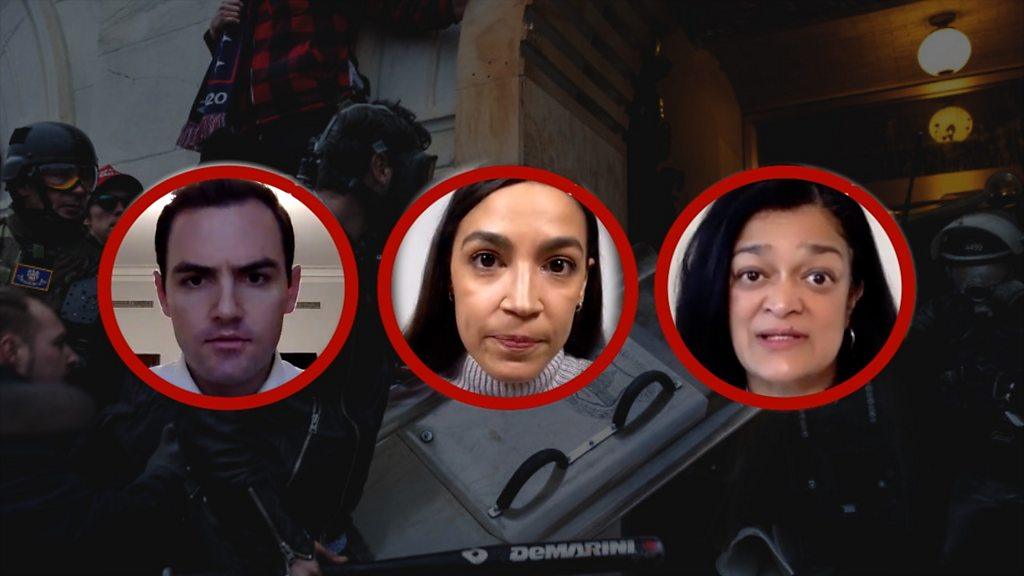Capitol riots: Five takeaways from the arrests
- Published
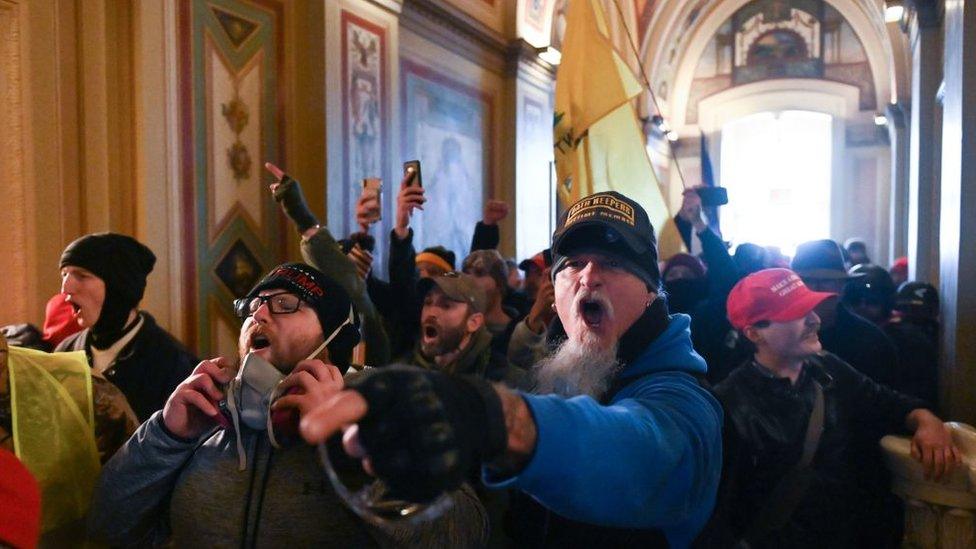
The storming of the US Capitol last month left five people dead, over 100 police officers injured and millions of dollars in damage to the building.
Most of the rioters were allowed to leave the building without facing arrest, but a month-long search for offenders has resulted in charges against a reported 221 people.
Among those arrested, there have been state lawmakers, military veterans and even a gold medal-winning Olympian.
Here's a closer look at who conducted the siege and why.
1. Ties to right-wing extremist groups were few
Far-right insignia was spotted on the clothing, badges and flags of several insurrectionists, but the vast majority of the 200-plus people charged so far are ordinary pro-Trump activists.
So far, only about 10% of those charged have been found to have ties to organised far right militias or other right-wing extremist groups.
"What we are dealing with here is not merely a mix of right-wing organisations, but a broader mass movement with violence at its core," wrote Dr Robert Pape, director of the Chicago Project on Security & Threats.
Dr Pape led a 22-person research team from the University of Chicago in a study - titled Faces of the American Insurrection - that takes a closer look at who has been arrested since 6 January.
The report found that FBI arrests of violent right-wingers over the past five years were almost five times as likely to uncover militia and gang connections as those arising from the violence on 6 January.
At least 12 people linked to the Proud Boys - an all-male group with a history of street violence against left-wing opponents - currently face charges.
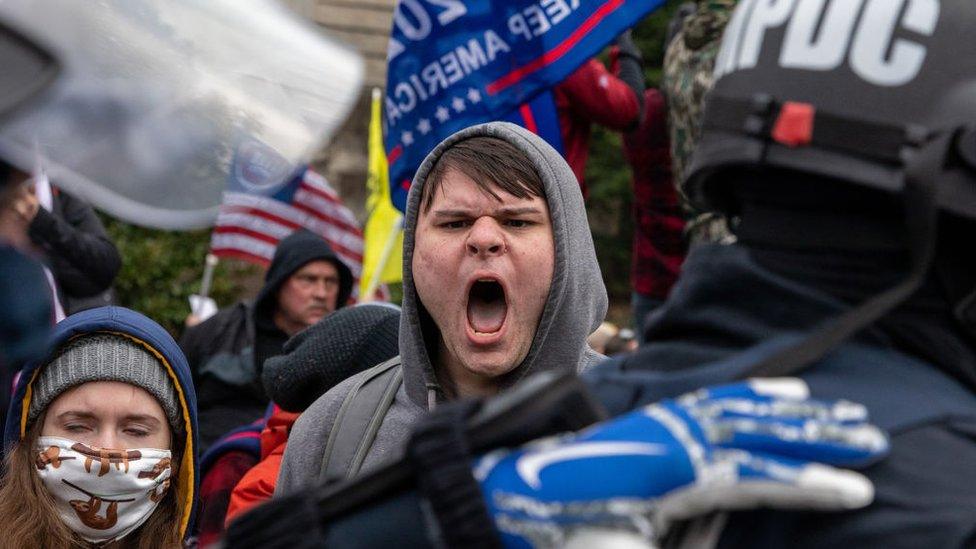
It includes prominent members like a leading organiser of its Hawaii branch, a self-proclaimed "sergeant in arms" and a former US Army captain who ran for a seat in a state legislature.
Bomb-making manuals were located in the home of one arrested Proud Boy. Another was a self-professed white supremacist who had previously expressed his desire to become a "lone wolf killer".
Other extremists had connections with militant anti-government groups such as the Oath Keepers, the Three Percenters and the Aryan Nations, several of whom have military experience.
One arrested Three Percenter - Guy Wesley Reffitt, 48, a drilling rig worker from Texas - reportedly threatened his children, saying: "If you turn me in, you're a traitor and you know what happens to traitors...traitors get shot."
2. More rioters came from 'Biden counties' than 'Trump counties'
The mob was largely pro-Trump, but they came from all parts of the country.
The rioters facing federal charges hail from 41 out of the 50 US states and the District of Columbia, according to the George Washington University extremism tracker, external.
The University of Chicago report finds that most of the insurrectionists came from large urban counties where Joe Biden beat Donald Trump by slim-to-moderate margins in the 2020 election.
These counties typically contain big and racially diverse populations.
Only a few came from pro-Trump strongholds.
"This will come as a surprise to many Biden supporters, who presumably think that the insurrectionists are coming from red counties - rural, almost completely white, and with high unemployment - far from Biden strongholds," said Dr Pape.
"This is fundamentally a political movement, one not only centred in "red" parts of the country, but also consisting of pro-Trump supporters who are in the political minority in many places."
3. The crowd was not a young one
Much like other right-wing activists arrested for deadly violence since 2015, the protesters facing charges have been predominantly white and male.
But whereas the extremists charged from 2015 to 2020 were mostly under the age of 35, two thirds of those facing charges for the Capitol attack are over the age of 35.
"As the data started to roll in, the very first surprise was the age because the last thing I was expecting was for the median age to be around 40," said Dr Pape.
He noted the average age for those involved in political violence around the world is late 20s to early 30s.
"With political violence, we think that individuals will age out of it. They'll grow up, get married, have kids and become less politically violent," he explained.
When a mob stormed the US capitol
More than four-fifths of them are employed and come from various backgrounds, from business owners to white collar professionals.
There is Dr Simone Gold, 55, from Beverly Hills, California, who was among a group of doctors that last year spread misleading claims about the coronavirus, including that hydroxychloroquine - a drug touted relentlessly by Mr Trump - was an effective treatment.
Jenna Ryan - a real estate broker from Dallas, Texas - garnered attention on social media after she flew to DC by private jet to join the march to the Capitol.
Cogensia - an Illinois-based marketing company - fired its chief executive Bradley Rukstales, after he was federally charged for being a part of the violent mob.
"What that means is there's more at work here than the usual drivers like unemployment and you can count less on usual solutions like 'give them a job'," said Dr Pape.
4. Many of them say Trump motivated them
Some of those involved in storming the Capitol have suggested they were at least partially motivated by Donald Trump.
Jacob Chansley - the "QAnon shaman" from Arizona who wore a Viking pelt to the riot - told the FBI he was in DC "at the request of President Trump".
A lawyer for Robert Bauer, a Kentucky man, said he "marched to the US Capitol because President Trump said to do so".
In an FBI interview, Valerie Elaine Ehrke from Northern California said she heard President Trump tell the crowd to go to the US Capitol and "decided she wanted to be part of the crowd, and she walked to the US Capitol", according to court documents.
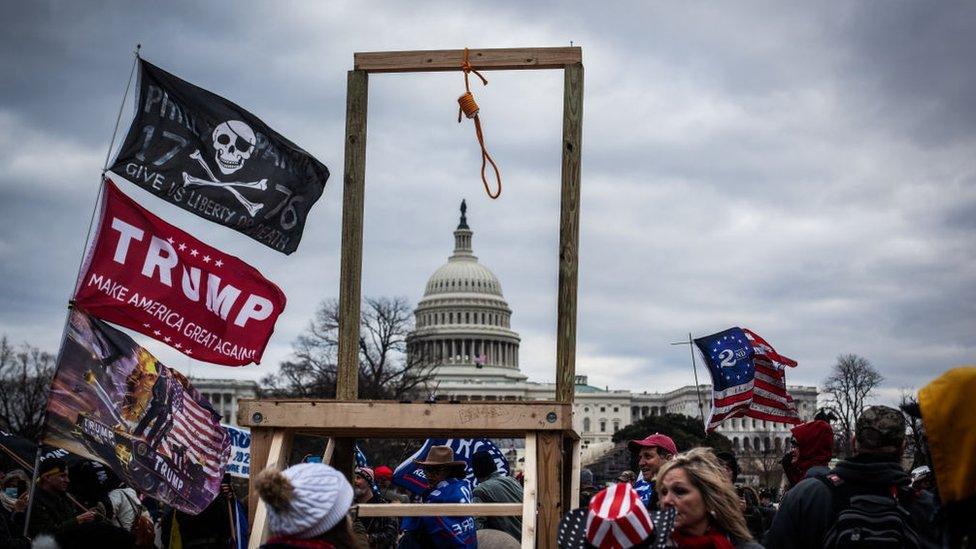
Some have argued in court that they went to the riot because Donald Trump told them to
Several have indicated they believed the election was not over and there was still a path to preventing the results from being certified.
This false claim was repeatedly made by Mr Trump since his election defeat and - prior to the riot - he told gathered supporters at a rally near the White House that he "won by a landslide".
With the second impeachment trial of Mr Trump starting this week, these statements may form the backbone of the prosecution's case as they try to prove the former president was "personally responsible" for inciting an insurrection.
5. Military members and veterans were involved
The Pentagon has acknowledged that "some of the extremists who stormed the US Capitol on January 6 were active duty service members and others were military veterans."
Although it has not released exact numbers, Secretary of Defence Lloyd Austin will institute a one-day military "stand down" in the next two months to address the issue of extremism in its ranks.
The terror of being trapped in the US Capitol - three eyewitness accounts of politicians
The New York Times has discovered at least two current military members, and 20 veterans that have been charged.
One veteran - Larry Rendall Brock Jr, 53 - was pictured in combat gear and carrying zip-tie handcuffs. He had repeatedly posted on social media about the Three Percenters and Oath Keepers militias.
Two others who face charges - Thomas Robertson and Jacob Fracker - previously served in the US Army and were also active members of the Rocky Mount Police Department in Virginia.
It remains unclear how many off-duty police officers may have been involved, but reports suggest that at least 31 police officers from agencies across the US are under investigation for their alleged participation in the protest and the eventual mob violence at the Capitol.
- Published10 January 2021
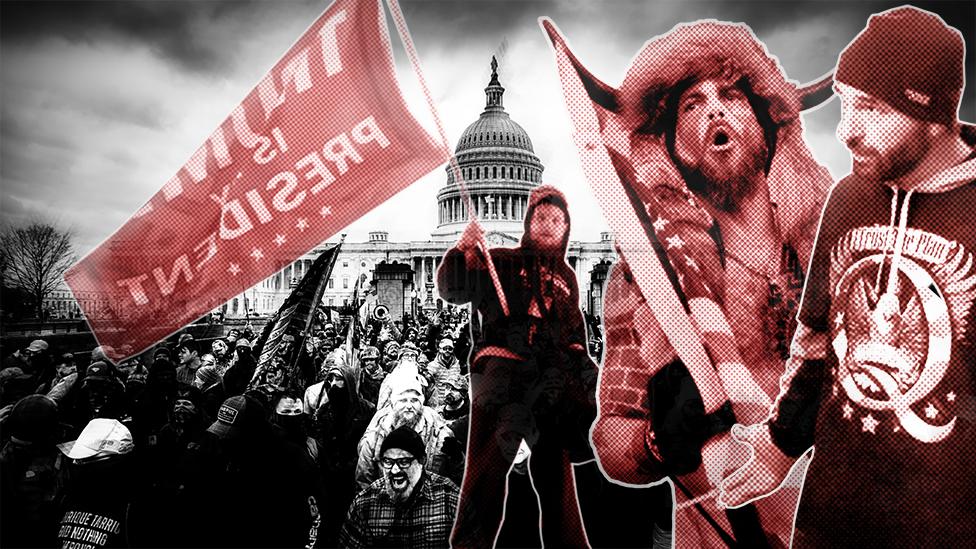
- Published11 January 2021
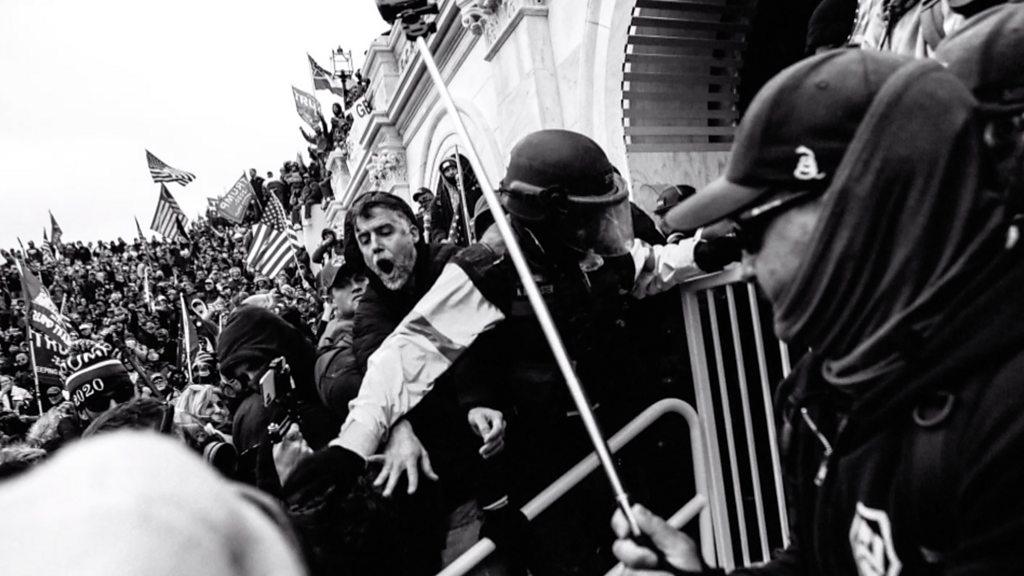
- Published8 February 2021
